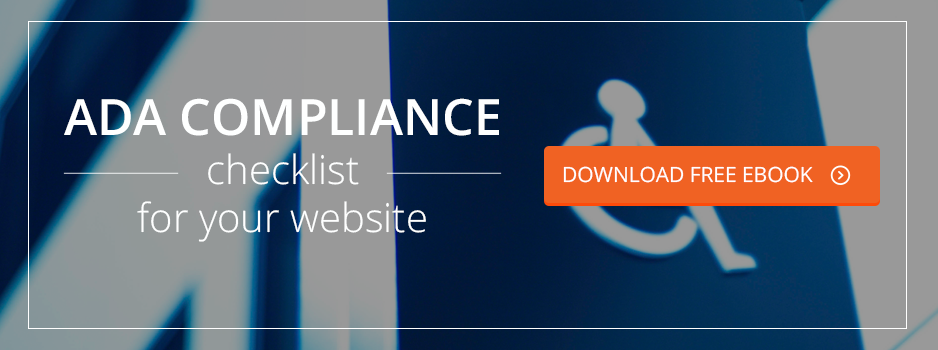While designing and maintaining your website, you’ll likely have a variety of goals in mind. In 2016, a website should play an active part in your marketing efforts, from hosting valuable content to generating leads. But even the most thorough website plans don't often include the answer to a deceptively simple question: Is your B2B website ADA compliant?
The Americans with Disabilities Act
The U.S. Congress passed the Americans with Disabilities Act in 1990. Designed to "prohibit discrimination against people with disabilities" in all areas of life, it was a major legislation that has since impacted countless businesses around the country.
But of course, promoting your business online was only a vague, futuristic concept twenty-six years ago. As a result, you may be forgiven for thinking that the ADA does not apply to your online marketing. In reality, as consumers and business customers alike have moved online, the ADA has begun to gain relevance in the digital realm as well.
How the ADA Affects Digital Marketing
Offline, the ADA affects all businesses with at least 15 employees. But even if you don't fit into that range, and even if the Department of Justice has not yet clarified its regulations as they relate to the web, ensuring your website's compliance is crucial for a number of reasons.
First, and perhaps most importantly, websites that are not easily accessible to the blind and deaf are facing - and losing - significant legal battles. A lack of web-specific regulations do not hold back potential plaintiffs; in fact, lack of clarity may actually be contributing to an increase in law suits that relate to the ADA online.
But even putting the legal problems aside, making your B2B website ADA compliant is in any business's best interest. Ultimately, you don't know whether potential customers require special accommodations in order to access your website. In the worst case, you will be losing customers because your website cannot be accessed by all prospects.
Making Your B2B Website ADA Compliant
So how do you make sure your digital presence both avoids legal trouble and catches customers that might otherwise fall through the cracks? All of the following steps are directly connected to accessibility. people with disabilities often use assistive software to navigate the internet, so your website needs to accommodate this type of software. That includes:
- Every type of media (image, video, or audio) should have a descriptive alt tag.
- Similarly, graphics on your website that cannot be explained by an alt tag should be accompanied by a detailed description.
- Graphics that only enhance the design and don't serve to add to your page's message should have an empty alt tag to avoid confusion.
- Video and audio should also include text captions and transcripts.
- Flashing images, video, and GIFs should be avoided whenever possible.
- HTML code should be adjusted, such as including headers for data tables (but not tables used for page layout).
- Any input fields should have detailed descriptions on just what information you seek.
You can find a complete list of items that make your website more accessible on the U.S. Department of Health and Human Services website.
As you can probably tell, the above points have one thing in common: they describe visuals and audio to visitors who may not be able to rely on their eyes and ears. Assistive software generally reads back web pages, and uses voice commands for navigation. To be successful, the software relies on textual clues about the site content, navigation, and input forms.
Is your b2b website ADA compliant? The answer to that question may impact your business, both legally and in terms of attracting customers. Especially if you are already thinking about a web redesign, adding accessibility to your list of action items can be a crucial step for your business.



